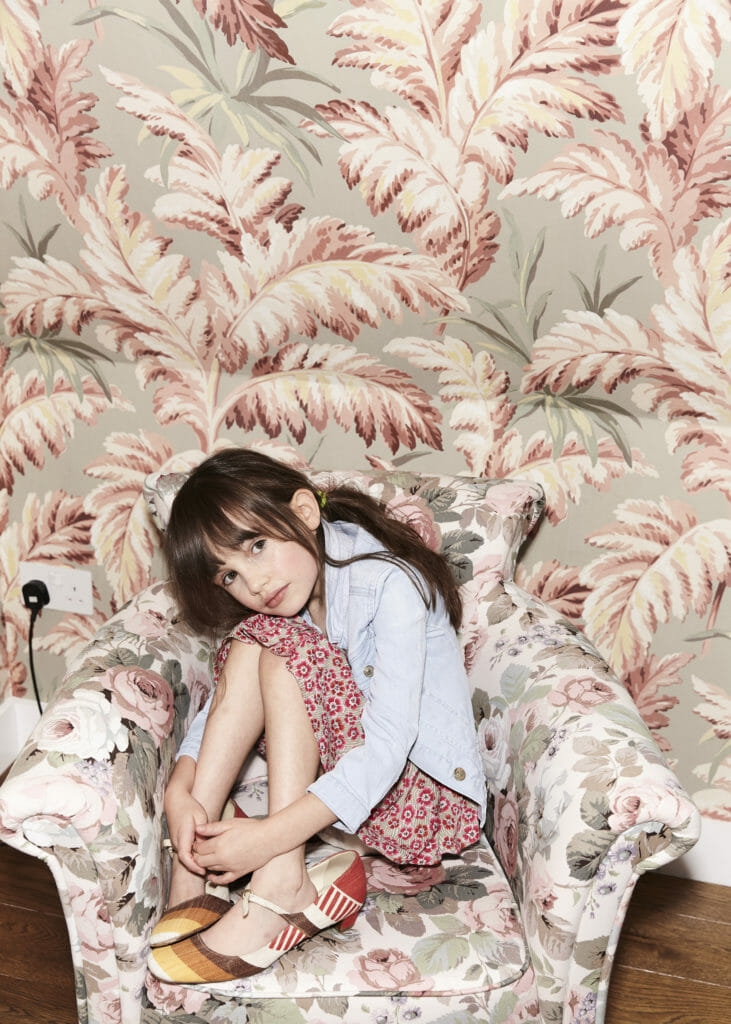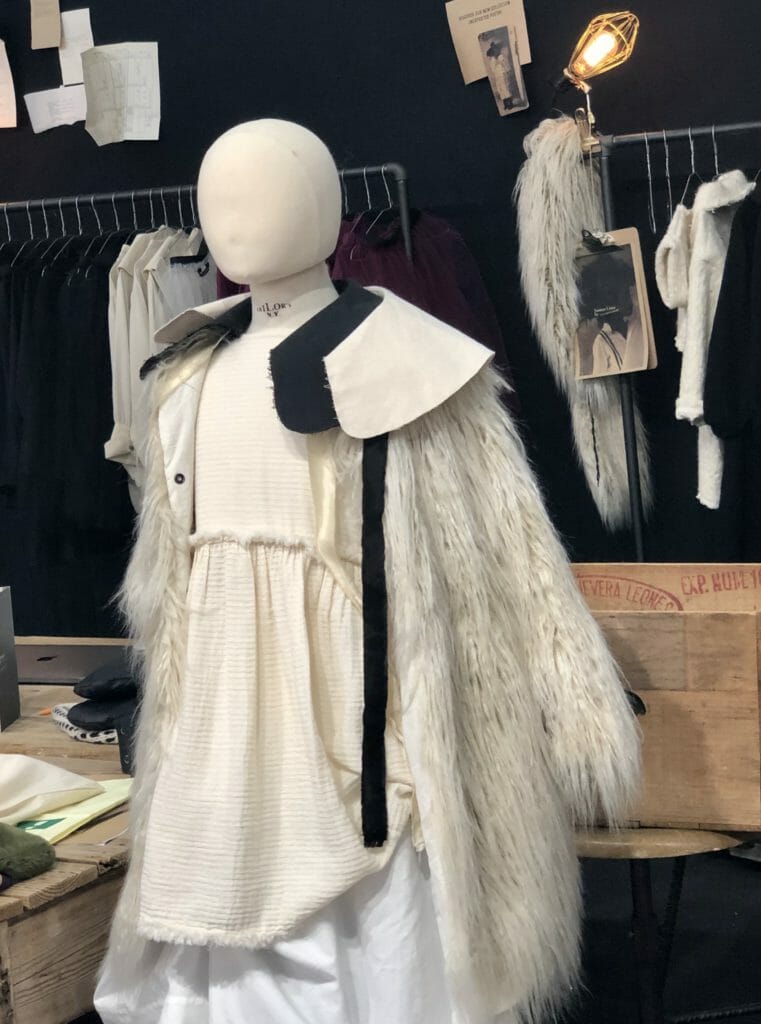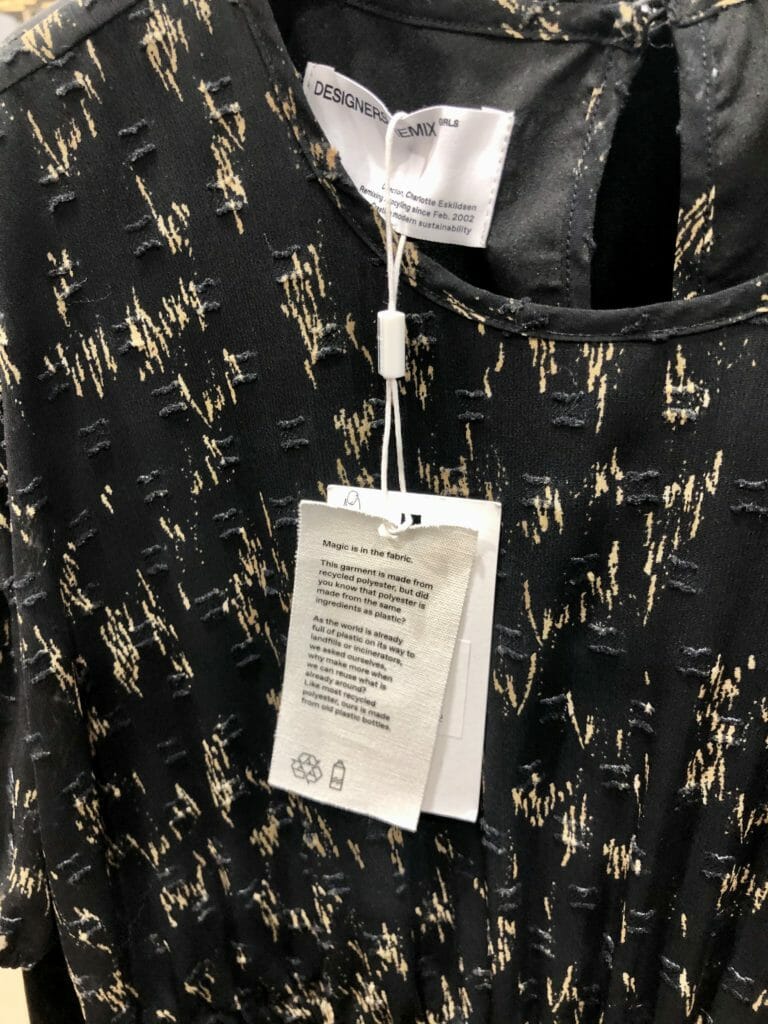Sustainability in kids fashion is the current hot topic at the kids trade shows.
Consumer perceptions are changing rapidly, a new generation of mothers has arrived with a more concerned attitude, to sustainability and the planet, to authenticity, to organic and natural products.
Whilst at the moment this seems to be confined to the States, Scandinavia and Europe there is no doubt that it is a growing trend and like most trends will be spreading worldwide soon.
Innovations such as pre-loved clothing websites, rental, swap meet ups and re-use of deadstock have hit the adult market hard and are likely to be more relevant in kidswear soon too. Bonpoint’s new creative director Anne Valerie Hash already used old leftover Liberty print fabrics from the stockroom to make patchwork limited edition items in her first collection for the chic French label.
Rental clothing has even hit the department stores with Selfridges hosting start up HURR from today in a pop up store for adult customers to peruse 200 styles from their website collection as well as dropping off their own designer cast offs for others to rent and earn them income.
While PR dynamo Shosh Kazab has started a pre-loved and old stock online site called Kidswear Collective which will be holding a pop up shop also in Selfridges from Mid March.

Pre-loved clothing from Kidswear Collective, photo Ulla Nyeman, styled by Tracey Jacob, HMU Jo Gillingwater from a shoot for Forever Young magazine
I’ve asked a number of Kids fashion experts how they view sustainability in kids fashion and looked at a couple of the brands who have been active in this area for a while as this is not a simple subject as Inger from Breitenstein Agencies, a UK agent for Veja and Scandinavian brands explains;
“I find that sustainability is at the forefront for many buyers at the moment. Sustainability is however many things. Some seem to ask a lot about products being organic, vegan etc, but they haven’t maybe reflected that much how facilities are at factories, how garments are transported, packaged in plastic bags, waste water treated, workers’ rights etc.
We talk a lot with our customers about the overall approach to being sustainable, what they do, how they buy, what they can do to recycle fabrics etc.
It is a growing topic and it has grown a lot over the past two years- more shops are in the process of taking a stand and learning about sustainability.
I feel a clear direction that fashion as one of the very big polluters are now working hard at finding sustainable visions with a solid longevity.
Working with Veja has been a great eyeopener for me and I am so impressed with the way they have chosen to run their business. They have a very holistic approach to being sustainable and they want to be as transparent as possible.
Many of our bigger clients/ multiples ask many more questions than just a few years ago and they have clear company policies asking for certificates relating to factory safety, production facilities, locations, workers’ rights etc.”
Shana Laub the owner of online retailer Shan & Toad has made personal changes as well as awareness for her own site;
“Sustainabilitiy is something near and dear to me. On a personal level, I’ve managed to rid my home of most plastic and synthetic materials. We don’t use disposable things and I don’t subscribe to that sort of life style. We don’t drive, but rather walk most places. (Then again, I am lucky to live in a place conducive to this kind of lifestyle.)
My children all understand the importance of preserving this planet and are always on board. They’re quite vocal about it too with their friends as it is stressed here at home. Being in fashion, and always keeping up with the latest and most current trends does seem sort of contrary to my beliefs, but I do believe in buying well and buying less.
We pass down all of our clothing that we don’t need to friends that are less fortunate and at least I know that buying well has the advantage of a longer life usually and doesn’t need to be discarded after we’ve finished with it. I can’t stand excess and am quite the minimalist. That is why I have a difficult time with the current market trend of large discounts.
We are pushing this idea of mass consumption and over- production. If we can all work together to iron out the kinks and restore the marketplace to a healthy and happy medium, perhaps we wouldn’t has do much excess around and there wouldn’t be the need to subscribe to this promotion- driven model.
In terms of selecting brands that are sustainable and eco- conscious, I’m amazed at the brands and their focus on this right now. So many are focused on organic, and sustainable fabrics and production, some focus on artisanal and slow production, some are focused on recycled fabrics, or utilizing dead-stock.
It is quite the trend, and I hope that this brainstorming and innovative thinking does carry on. I think that many of the designers and founders of these niche brands are conscious and focused on these issues, becoming more mindful and focused on sourcing materials and production. And it’s reassuring. If we all do our little part, we will definitely make a difference.”

Little Creative Factory – a slow fashion brand for women and kids with an emphasis on long lasting garments, at Playtime with a FW20 creation
Lili Bettens is the owner of PR and marketing company Kids Comunicacion in Spain and founder of industry database Little Tag;
“Sustainability is the key for creative kids’ brands. Young parents are more than ever concerned about environment, climate change, zero waste and lower consumption.
Their ethical principles about how they eat or how they travel are also reflected in how they dressed their kids. They buy less but better.
Creative brands, mostly formed by women and mothers themselves, are now offering clothes made of natural fabrics and produced by local manufacturers.
It’s very positive! Consumers will understand more and more why a T-shirt cannot cost 2 euros and why they can’t participated in this consumer-driven society. Renowned brands taking the path of sustainability could sell less at the beginning, but always better and gradually they’ll gain markets.
At the recent Pitti Bimbo there was a noticeable emphasis on protest, saving the planet, the concerns of the younger generation and sustainability, I asked WGSN Editor, Kidswear – Allison Goodfellow-Ash about her perceptions from the fair;
“Sustainability is the key inspiration at Pitti, and undoubtedly a protest-inspired print and graphic trend is about to ensue.
Beyond the slogan tee with all its greenwash trappings, there are some really innovative and exciting developments emerging for kids.
Slow fashion brands such as Holmm elevate beyond trend and fabrics at Play Up showcased their recycled denim and their B.Cork covering.
WGSN are particularly excited about Infantium Victoria’s new Weganool fabric, which will soon be showcased at the future fabric expo in London.
With a large dose of collaboration and entrepreneurial spirit; something the kidswear community has in spades, system change towards a more circular economy is an opportunity just waiting to happen.”

Infantium Victoria at Pitti Bimbo 90 for FW20 with a dress made from new textile Weganool
The trend from Pitti was also closely observed at both Playtime Paris and CIFF Youth where the fair had a display of the different certifications used across the Northern Hemisphere I featured on Instagram.
It’s worth noting that Infantium Victoria have also introduced a pre-loved section on their website where customers can return outgrown garments which will be resold for a 20% reduction on new clothing.

Designers Remix is a Danish label that has innovated very informative labels for all their recycled and reused textiles
The first retailer to state her mission for sustainability from start up was Fashion stylist and Editor Mindi Smith whose site Little Red Planet was inspired by her daughter;
“Our goal is to hand-select designers who slow manufacture their apparel, give back to charity, and/or use organic and sustainable materials whenever possible.The Little Red Planet is founded and operated by me, Mindi, with the support of my daughter and muse, Marley.
After 20 years as a stylist in the fashion industry, my dream is to create a platform where I can combine my love of fashion with my desire to give back—and shift the way we shop. I work creatively with our designers to bring awareness to and support global children’s causes. Let’s teach our children together that less is more, quality counts, and we can make a positive change in the world we live in.”
In conclusion it would seem very encouraging that a good proportion of kids companies are making change and new labels are being very thoughtful about just how they approach sustainable practices whether its in fabric choice, working practices or minimalising waste.
The key to it all is probably starting with fabrics that do the least damage to the planet as possible and there is a lot of current research in this area so brands should keep their eyes open for new developments. I’ve seen increasing amounts of labels and chain stores using recycled bottle textiles for sun protective swimwear.
It’s certainly a factor all companies need to be looking at or they will be left behind. Consumers are now realising they have the power to change things through their purchases and the kids world is on the front line so it needs to shape up pretty quickly.
It shames me that the fashion world I love has been such a polluter but it also inspires me, because we can do so much better!
Infantum Victoria photo by Giovanni Giannoni – stand photos Smudgetikka – all rights reserved
Posts copyright Smudgetikka – no reproduction without permission 2009-2020
The post Sustainability in kids fashion, a closer look appeared first on Smudgetikka.
To read the article in English. Paruna for kids . smudgetikka.com





Комментариев нет:
Отправить комментарий